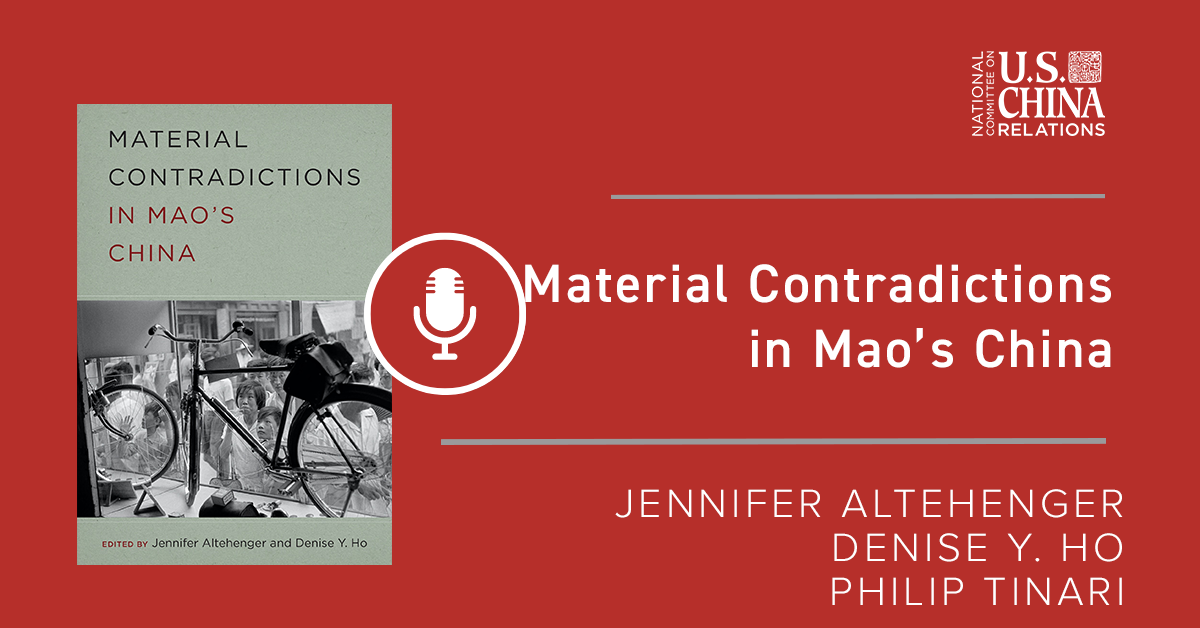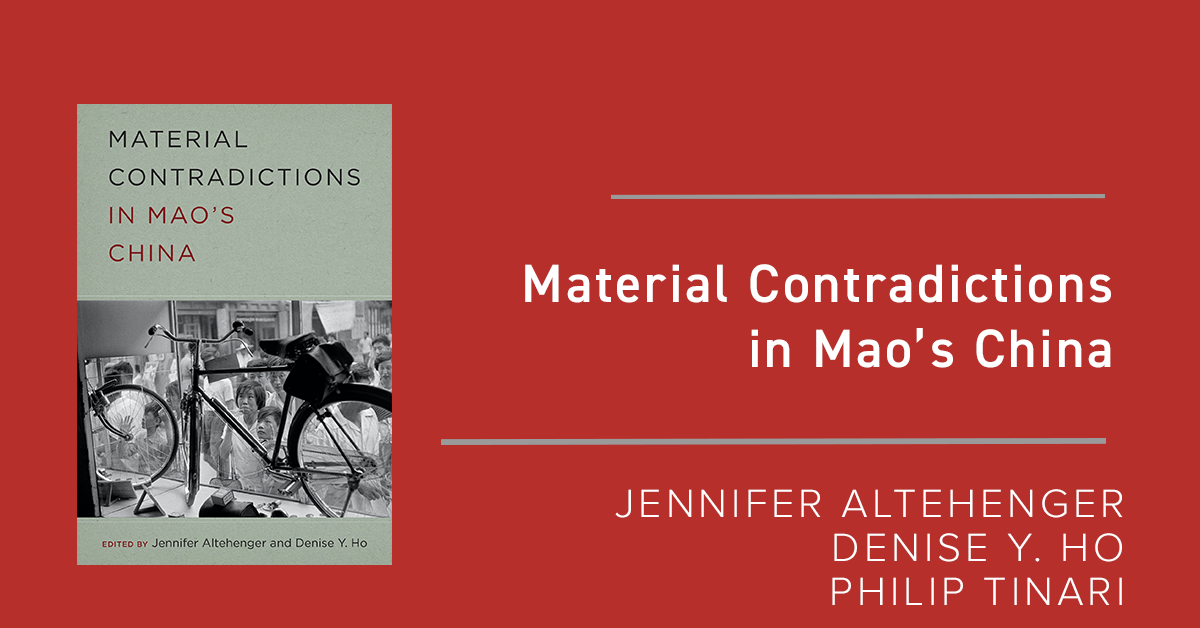The growth of markets and consumerism in China’s post-Mao era of political and economic reform is familiar. The Mao period (1949–1976), by contrast, a time of scarcity, appears to have had little material culture. In reality, people attributed great meaning to materials and objects, often precisely because they were rare, expensive, and difficult to obtain. Material Contradictions in Mao’s China, essays on art, cinema, culture, performance, and more, explores the paradox of material culture under Chinese Communist Party rule and illustrates how central material culture was to social and economic construction of the country and to projections of a socialist utopia within reach of every person, if only they worked hard enough.
In an interview conducted on December 9, 2022, Material Contradictions co-editors Jennifer Altehenger and Denise Ho, in conversation with Philip Tinari, discuss the significance of physical objects during the Mao period.

